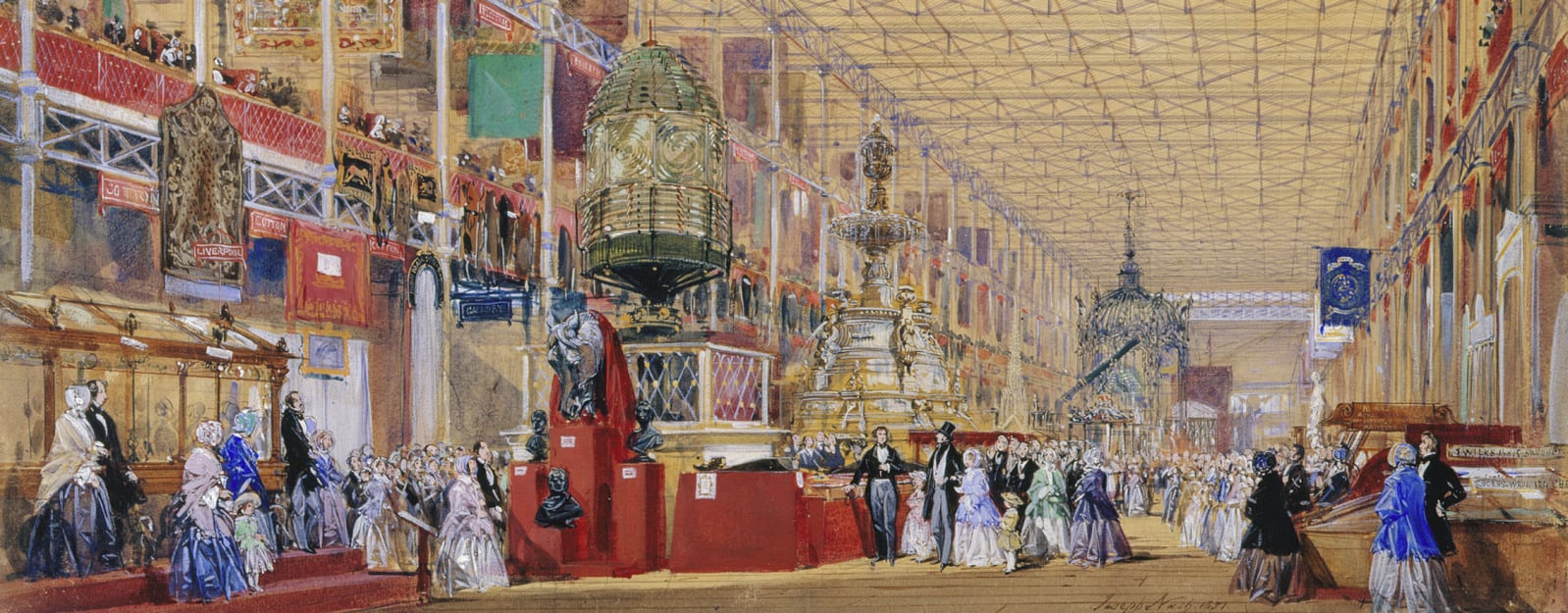
Prince Albert took a leading role in the organisation of the Exhibition
A legacy
Even before the closure of the Exhibition in October, Prince Albert and the Commissioners had begun to look to the future and consider the ways in which the energy and excitement generated from the Exhibition could be channelled into new endeavours. In August 1851 Prince Albert stated in a memorandum that any surplus profit should be used to establish educational institutions, reflecting the four main divisions of the Exhibition. He proposed purchasing 30 acres of land in South Kensington for this purpose.
After the closure of the Exhibition it was calculated that a profit of £186,000 had been made. The Commissioners accepted Prince Albert’s scheme for South Kensington and in December 1851 began buying the land. Similar to the granting of the Royal Commission in 1850, a new charter was required to give the Royal Commission the right to own land. This was granted in January 1852, allowing the Commission to exist in perpetuity and continue to build the institutions Prince Albert had described in his memorandum of 1851. The subsequent estate became known as ‘Albertopolis’ and the early institutions which were built there later evolved into contemporary institutions such as the Natural History Museum, the Victoria and Albert Museum, the Science Museum and Imperial College.
Discussion around the fate of the Crystal Palace also continued. The building had captured the imagination of the public and many were keen for it to remain standing. Joseph Paxton wanted the building to remain in Hyde Park and be turned into a Winter Garden. Prince Albert and the Commissioners, however, were keen to see the building relocated elsewhere as they had promised that it would be temporary. As a result, in 1852 the building was bought by a consortium of businessmen and relocated to Sydenham where it was to stand until 1936 when it was destroyed in a fire.
Prince Albert continued to be a significant driving force for the Royal Commission in the years that followed the Exhibition. When another exhibition was planned for 1862 he provided advice to a new group of Commissioners. The 1862 Exhibition was to be one of many more that were inspired by the Great Exhibition. Unfortunately, due to his untimely death in December 1861, Prince Albert was never able to see this legacy play out. In a memorandum in 1863 Henry Cole stated, 'The Commission has lost its guiding spirit' [RC/H/1/19/24].
As a memorial to their former Chairman the Commission used some of its surplus funds to build the Royal Albert Hall.
The charter of 1852 established the Royal Commission as a public body and to this day they are still landlords to much of the South Kensington site. Once the development of the site was essentially completed the Commission used the remaining funds to set up an educational trust to continue the educational aims of the Great Exhibition of 1851. Prince Albert had intended that the Commission would offer scholarships for study in the fields of science and design. By 1891, the Commissioners were in a position to fulfil Prince Albert’s vision. They subsequently developed a programme of scholarships and fellowships which exist to this day.
The programme commenced with the award of Science Research Scholarships from 1891. However, as the needs of industry and the national and international research funding landscapes have changed throughout the twentieth and twenty-first centuries, so the 1851 Commission has adapted its award schemes for students and researchers to ensure that they continue to be of relevance, shifting emphasis to the support of individuals. To date more than 3,000 scientists, engineers and designers have received funding and the Commission counts 13 Nobel Laureates, seven holders of the Order of Merit and four Presidents and over 150 Fellows of the Royal Society amongst its alumni.







